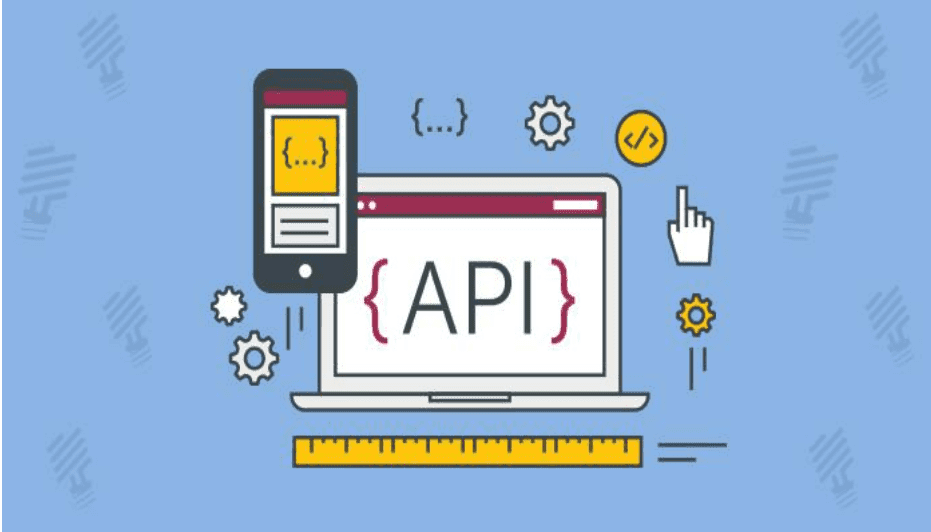
Understanding RESTful APIs: A Beginner’s Guide
July 20, 2024
Qasim Parekh
RESTful APIs have become a standard in web development due to their simplicity and scalability. This beginner’s guide explains what RESTful APIs are, their core principles and components, and provides a simple example to illustrate how they work. Understanding these concepts is essential for creating efficient and robust applications.
API
In today’s digital age, the term "API" is frequently tossed around, especially in the context of web development and mobile applications. API stands for Application Programming Interface, a set of rules that allows different software entities to communicate with each other. Among the various types of APIs, RESTful APIs have become a standard due to their simplicity, scalability, and statelessness. This blog serves as a beginner’s guide to understanding RESTful APIs, their principles, and how to use them effectively.
What is a RESTful API?
REST stands for Representational State Transfer, an architectural style for designing networked applications. A RESTful API is an API that adheres to the principles of REST. These principles include:
- Statelessness: Each API call must contain all the information the server needs to fulfill the request. The server does not store any client context between requests.
- Client-Server Architecture: The client and server operate independently, allowing for greater scalability. The client handles the user interface and experience, while the server manages the data and application logic.
- Uniform Interface: A consistent and standardized interface simplifies the interaction between the client and server.
- Cacheability: Responses from the server should indicate whether they can be cached by the client, improving performance and reducing load on the server.
- Layered System: The architecture should allow for an intermediary layer (such as a load balancer or a cache) to be introduced between the client and server without affecting their interaction.
Core Components of RESTful APIs
To understand how RESTful APIs work, it’s essential to grasp their core components:
- Resources: Resources are the fundamental objects or data that the API deals with, such as users, posts, or products. Each resource is identified by a unique URI (Uniform Resource Identifier).
- HTTP Methods: RESTful APIs leverage standard HTTP methods to perform operations on resources:
GET: Retrieve a resource.
POST: Create a new resource.
PUT: Update an existing resource.
DELETE: Remove a resource. - Endpoints: Endpoints are the specific paths or URLs where resources can be accessed. They follow a predictable and hierarchical structure, making the API more intuitive to use.
- Headers and Status Codes: HTTP headers provide essential metadata about the request and response, such as content type and authorization tokens. Status codes indicate the result of the API call (e.g., 200 for success, 404 for not found, 500 for server error).
Building a Simple RESTful API
To illustrate how a RESTful API works, let’s consider a simple example: a to-do list application. Here’s how the basic endpoints might look:
- GET /todos: Retrieve a list of all to-do items.
- POST /todos: Create a new to-do item.
- GET /todos/{id}: Retrieve a specific to-do item by its ID.
- PUT /todos/{id}: Update a specific to-do item by its ID.
- DELETE /todos/{id}: Delete a specific to-do item by its ID.
Each endpoint corresponds to a specific action, and by using the appropriate HTTP methods, clients can interact with the to-do items.
Advantages of RESTful APIs
RESTful APIs offer several advantages that have contributed to their widespread adoption:
- Simplicity: The use of standard HTTP methods and a uniform interface makes RESTful APIs easy to understand and use.
- Scalability: The stateless nature of REST allows for better scalability, as each request is independent and does not rely on server-side sessions.
- Flexibility: RESTful APIs can handle various types of data formats (such as JSON, XML, or plain text) and can be used for both web and mobile applications.
- Interoperability: By adhering to standard protocols, RESTful APIs enable different systems to communicate seamlessly.
Conclusion
Understanding RESTful APIs is crucial for anyone venturing into web or mobile development. Their simplicity, scalability, and flexibility make them an ideal choice for building robust and efficient applications. By grasping the core principles and components of RESTful APIs, beginners can start creating their own APIs and contribute to the ever-evolving digital landscape.